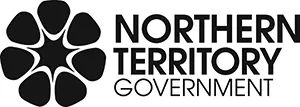Trachoma
Trachoma is an infectious eye disease caused by repeated infections with eye strains of the bacteria Chlamydia trachomatis.
It can cause painful blindness in older people who have had severe active trachoma usually in childhood.
Australia is the only developed country with blinding trachoma.
How it spreads
Trachoma occurs in areas with overcrowded housing where personal and community hygiene are difficult to maintain.
The Chlamydia trachomatis bacterium is easily spread through infected eye secretions.
These secretions are passed back and forth between young children during close contact such as playing and sharing the same bedding. Flies can also spread the bacterium.
Children are the main reservoir of infection. Dirty faces are the most important risk factor in the transmission of trachoma.
Who is at risk
Those at risk of developing trachoma include:
- Aboriginal people in remote Australia
- young children, especially those with poor personal and family hygiene practices.
The highest rates of disease are found in children aged 3 to 8 years.
Symptoms
Active trachoma in children often causes no symptoms.
It can be present even in children with clean faces. However, children with active trachoma may have red, sore, sticky eyes and nasal discharge.
Follicles and inflammation under the upper eyelids are also hallmarks of active trachoma.
As it progresses, scarring develops under the eyelids. The eyelashes turn in and rub on the cornea.
This abnormal condition is called trichiasis. This may be painful and will cause corneal scarring, followed by visual loss and then blindness.
Infectious period
Trachoma is highly infectious in its early stage and may be infectious intermittently as long as active trachoma infection persists.
People who are at risk experience repeated episodes of infection.
Adults and those without clinical signs may still have episodes of infection and be infectious.
Treatment
The antibiotic azithromycin is used to treat active trachoma. A single dose is given, and may be repeated in 6 to 12 months.
Azithromycin is the recommended treatment for all people diagnosed with trachoma as well as their contacts.
A contact is anyone who is living or sleeping in the same house as a person with trachoma. If the person lives or sleeps in multiple households, then all members of each household are contacts.
If there is a high rate of trachoma in a community, then all community members should be treated.
Aboriginal adults over 40 years of age from communities in which trachoma is endemic should be screened annually for trichiasis.
Additionally, adults who complain of a sore eye need to be examined for trichiasis. Health services need to ensure that a process is in place for timely surgical referral and treatment of people with trichiasis.
The World Health Organisation and the Communicable Disease Network Australia recommend the SAFE strategy:
- surgery – surgical correction for trichiasis
- antibiotics - azithromycin for cases of active trachoma and their contacts (that is all household members)
- facial cleanliness – promote clean faces to reduce spread of infection
- environmental improvements – improve overcrowding, water and sanitation facilities (it is especially important to address barriers to face washing).
These 4 actions are aimed at eliminating trachoma by reducing the risk and frequency of transmission and preventing trichiasis with surgery.
Prevention
To prevent trachoma, reduce overcrowding and support good hygiene practices.
Information for health professionals
To find out more, go to the NT Health website.
Contact
Contact your nearest Centre for Disease Control on the NT Health website.
